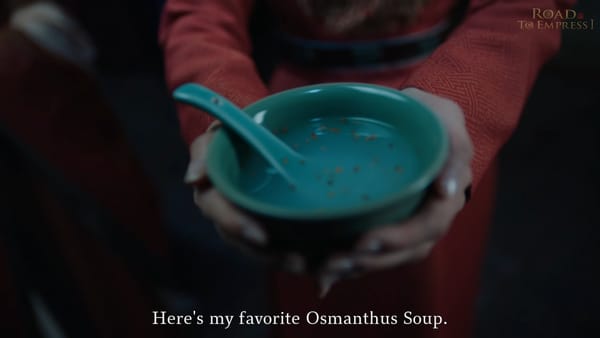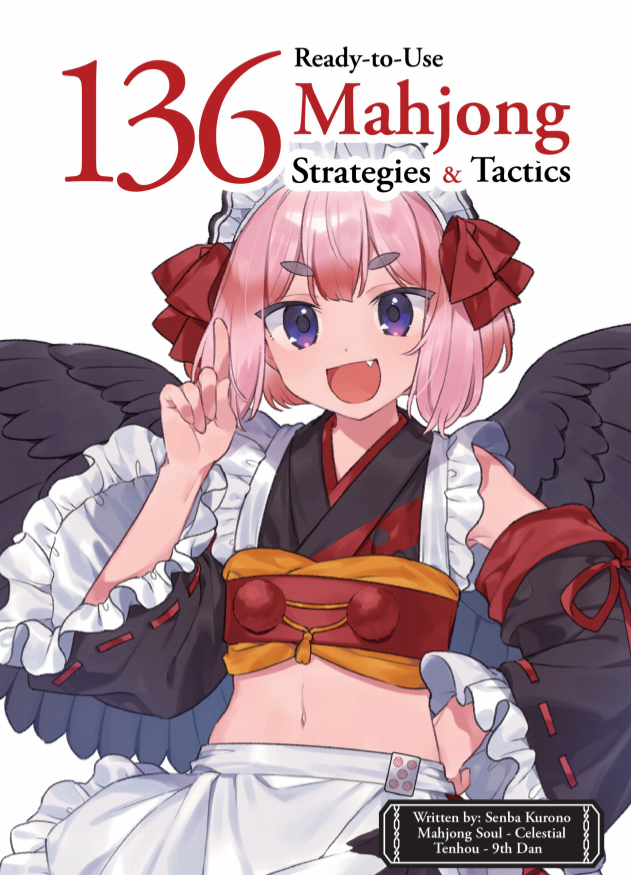My Dress-Up Darling and The Appeal of Pairing Gals With Nerds
Having a personality is better than being perfect

My Dress-Up Darling1 is certainly a break-out success of a series, but it might be more accurate to say that its heroine, Marin Kitagawa, is a breakout success of a character. Just look at social media, where she’s conquered the fan art mind-space. The good word of Marin has flown far and wide, perhaps beyond the reach of the original work itself.
(Marin herself would certainly say Seriously?! Omigawd! This is freakin’ hilarious! I can’t even!)
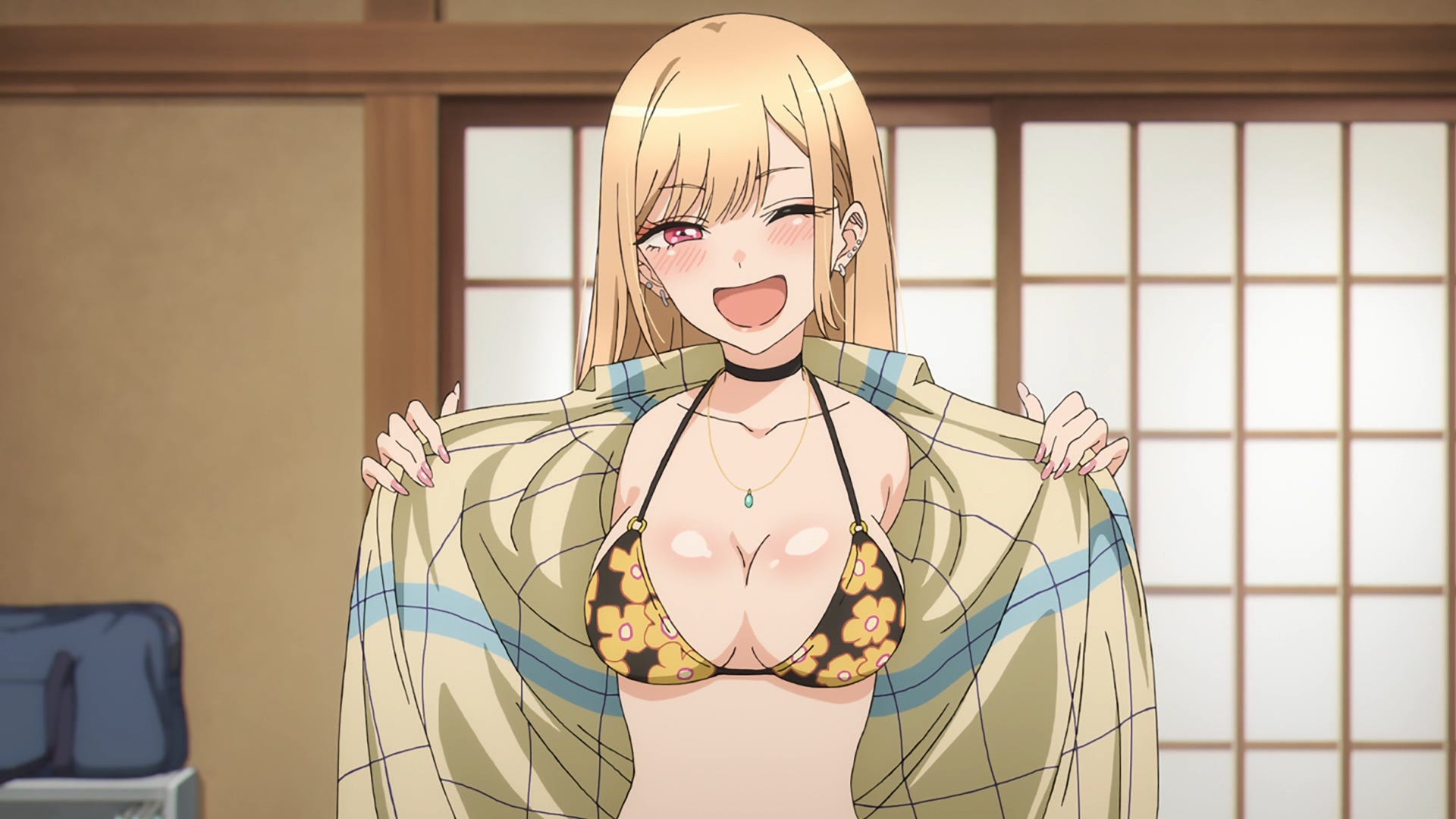
It’s easy to cynically point at the character’s willingness to jump out of her clothes for the sake of cosplay, and indeed the animation’s painstaking, loving, and often risque detail.
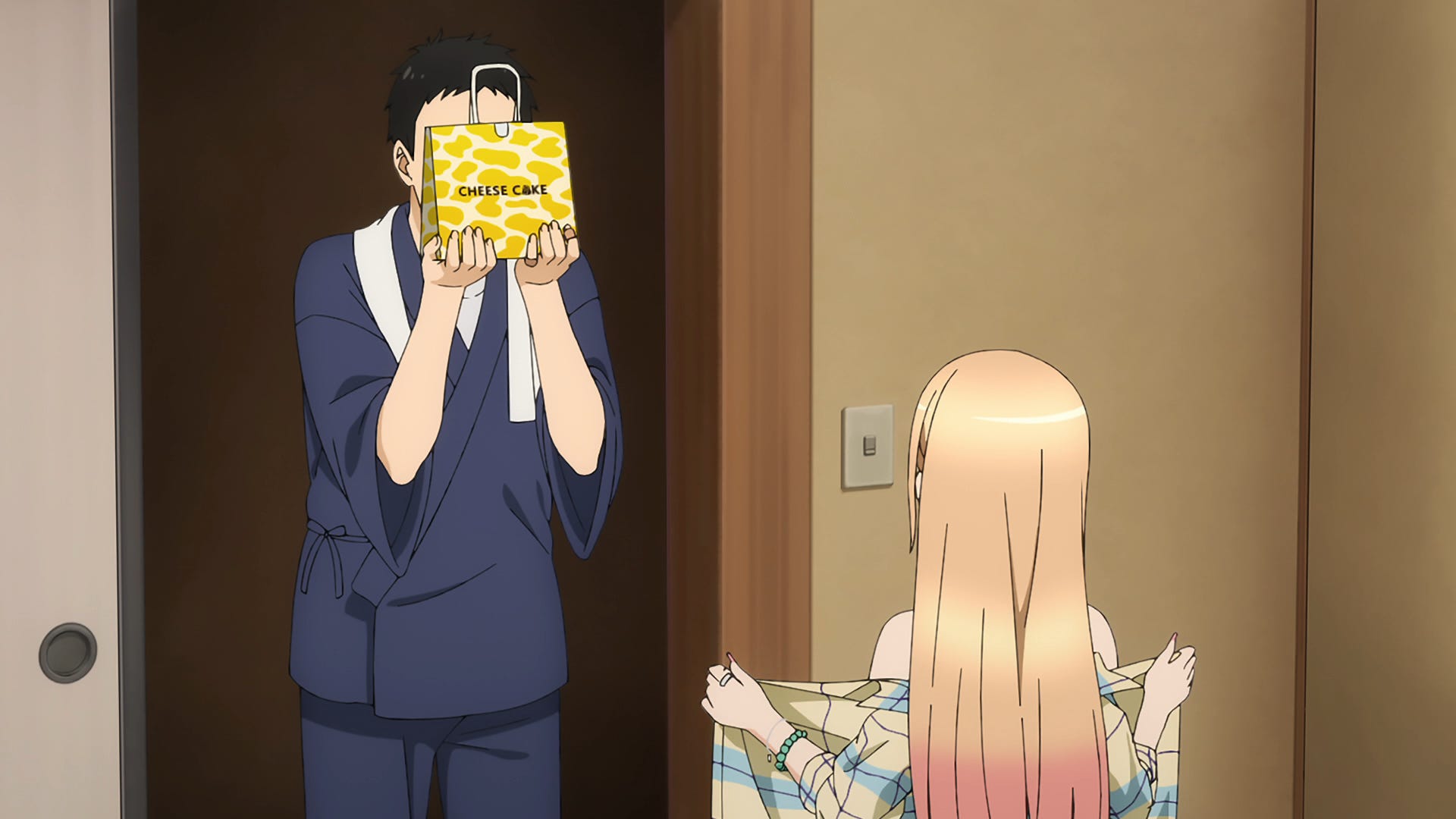
But if it was just a matter of good looks, every anime girl who’s ever had such lushly depicted wardrobe malfunctions would be a smash hit. As anyone who watched the final scene can attest, Marin and her cosplay-boyfriend Gojo move viewers emotionally as well. Why is that? From where does this power flow?
The Gal/Ota pairing: mutual outsiders

My Dress-Up Darling doesn’t pull its heroine out of nowhere: she’s a very well-established type. Though it’s apparently a rare and dwindling subculture in real life, the Japanese “gal”— very specifically fashionable, independent, free-spirited, and bluntly honest— endures in popularity with otaku, as series like the long-running romcom manga My First Girlfriend Is A Gal indicate.
This seems like a contradiction if you’ve ever heard a nerdy guy on the Internet whine about the popular, outgoing “Stacys” who won’t date them.2
But the gal represents a different fantasy. She is not necessarily “the popular girl”. Her priority is her subculture. The gal and the otaku come from different subcultures, but they are mutual outsiders in the place where they meet (like say high school). They’re people who insistently, stubbornly go their own way.
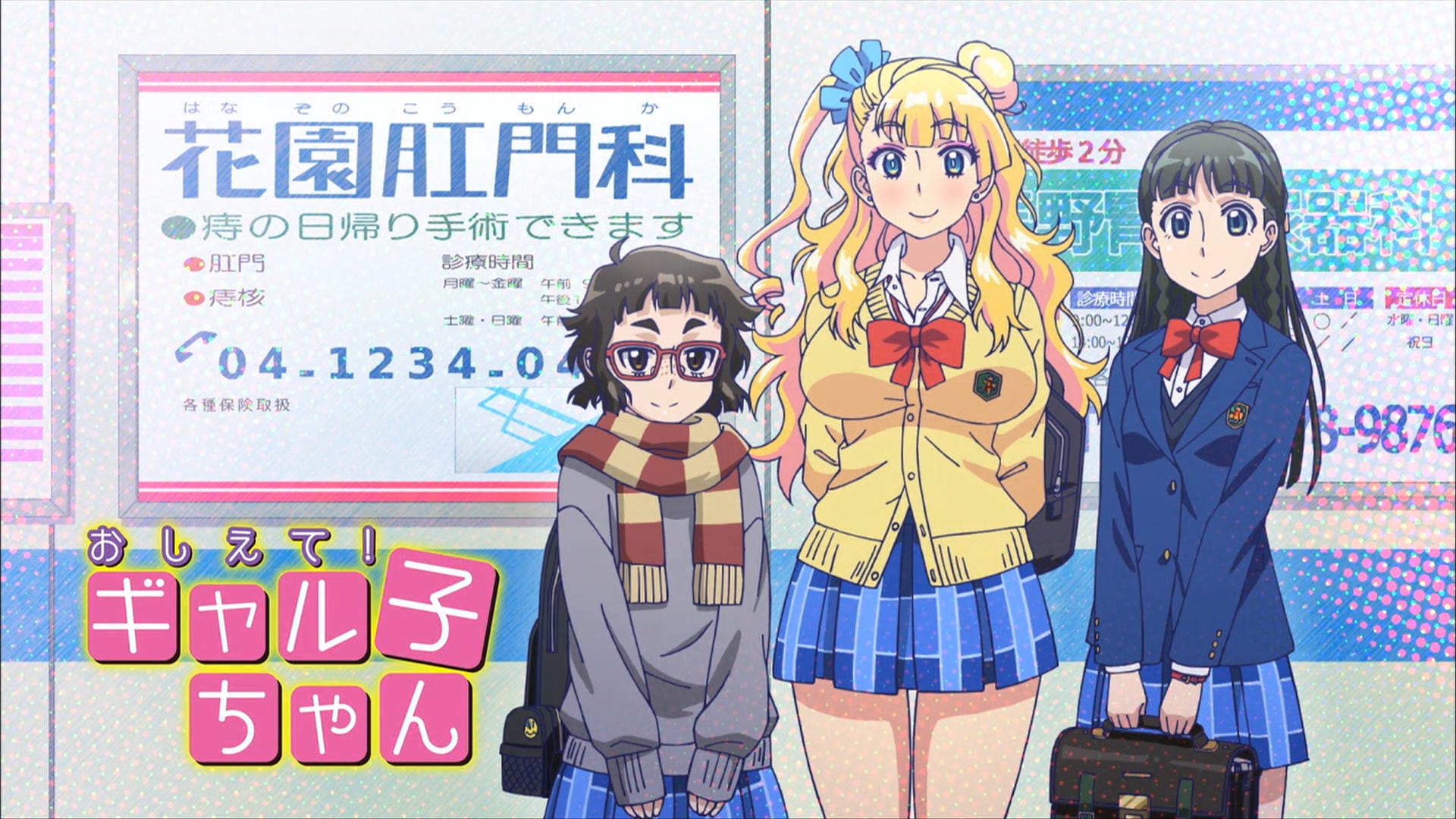
Consider the fast friendship and easy rapport of Galko and Otako (left), characters literally named for their subcultures, in Please Tell Me! Galko-chan.3 Galko is looks-conscious and fashion-forward, but she doesn’t judge her friend as a loser for lounging around in a sweatsuit. Likewise, Otako never dismisses her friend as a stereotypical pretty-faced airhead, or her passions as frivolous.
The gal accepts and loves her weird friend and vice versa. In the gal/otaku pairing, acceptance and healing for both parties lies in the arms of the other.
Of course, in My Dress-Up Darling the gal is the otaku. Marin is the modern, shameless otaku4 who graphs character relationships in magical girl shows on the chalkboard in class and talks loudly in the street about unspeakable acts performed in her favorite porn game. It’s not her hobbies that she’s shy or embarrassed about; it’s the thought of not getting Shizuku-tan’s outfit right. That’s the unlikely route by which she opens her heart to our hero.
The appeal of Gojo, an actual human being
Galko and Otako don’t have a romance, though. Marin and Gojo do. One of the things I really like about My Dress-Up Darling is that rather than indulging in blank slates or self-insert heroes, the author puts effort into making Gojo a fully realized person with his own identity.
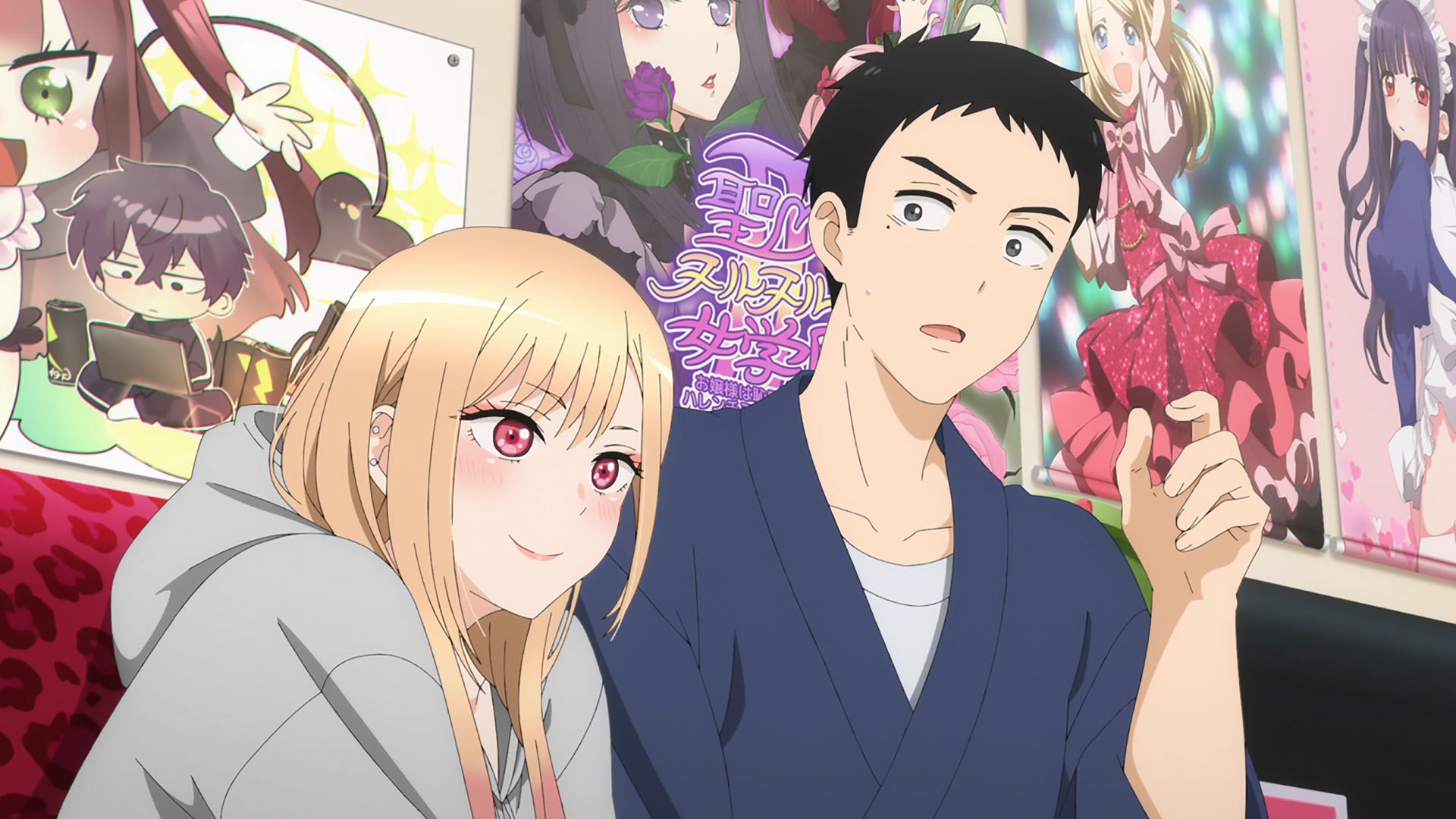
Rather than presenting an empty protagonist and saying “she’s in love with him because that’s the genre”, we get to see what a kind, genuine guy Gojo really is. We don’t have to wonder what Marin sees in Gojo; the series shows us that just as clearly as it portrays every step of Marin falling head-over-heels for him.
Gojo’s not the kind of otaku that Marin is— he’s never even heard of the weird games and cartoons that Marin gets him into— but he is a sheltered young man, clumsy with people and obsessed with his traditional craft. In other words, he’s still quite nerdy.
Like older generations of otaku, he’s got a lot of trauma and shame attached to his love for hina dolls that’s also stunted him socially. But that background allows him to appreciate other people’s passions, and it gives him a believable purity and obliviousness that makes him appealing and fit for the lead of a dude-focused romance, which is after all the genre where guys trip and fall onto naked women and go “wh-wh-wh-whoa!!”.
Gojo has his devotion to offer Marin. Not just his skill at the craft, but his sheer grit, his respect and appreciation for the things she loves, his natural, deep desire to make her happy. Marin offers her outgoing spirit; she nudges Gojo out of his shell towards a social life within her subculture, and she accepts and loves him for who he is. It’s good. It’s really nice. Ah.
The nature of Marin was irrepressible
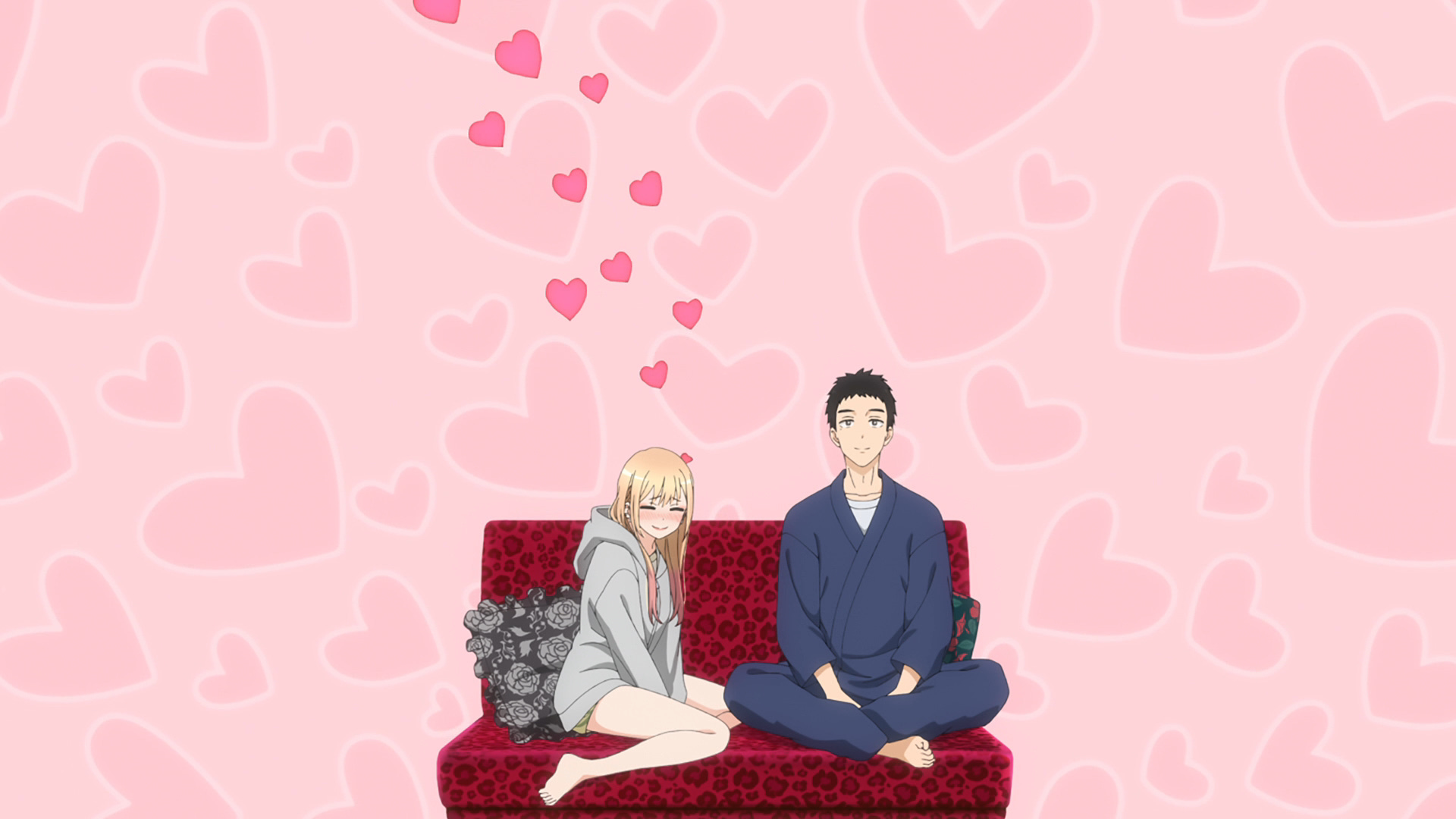
My Dress-Up Darling takes a common, tropey, appealing pairing— the gal and the nerd— and tweaks it in just the right ways to make it even more appealing. Without that powerful dynamic, and all that personality, behind her, Marin Kitagawa would not be the unstoppable force that she presently is.
Original title The Bisque Doll Falls In Love / Sono Bisque Doll wa Koi wo suru ↩
They’re not mad. It’s funny, actually, to them ↩
I would normally memory-wipe Galko due to the child pornography arrest of the author— in case you hadn’t heard about that— but it’s too strong an example not to bring up. ↩
I know people call you cringe, kids— and you are, make sure nobody gets you on video— but deep down the old otaku are jealous we couldn’t grow up like that. ↩


